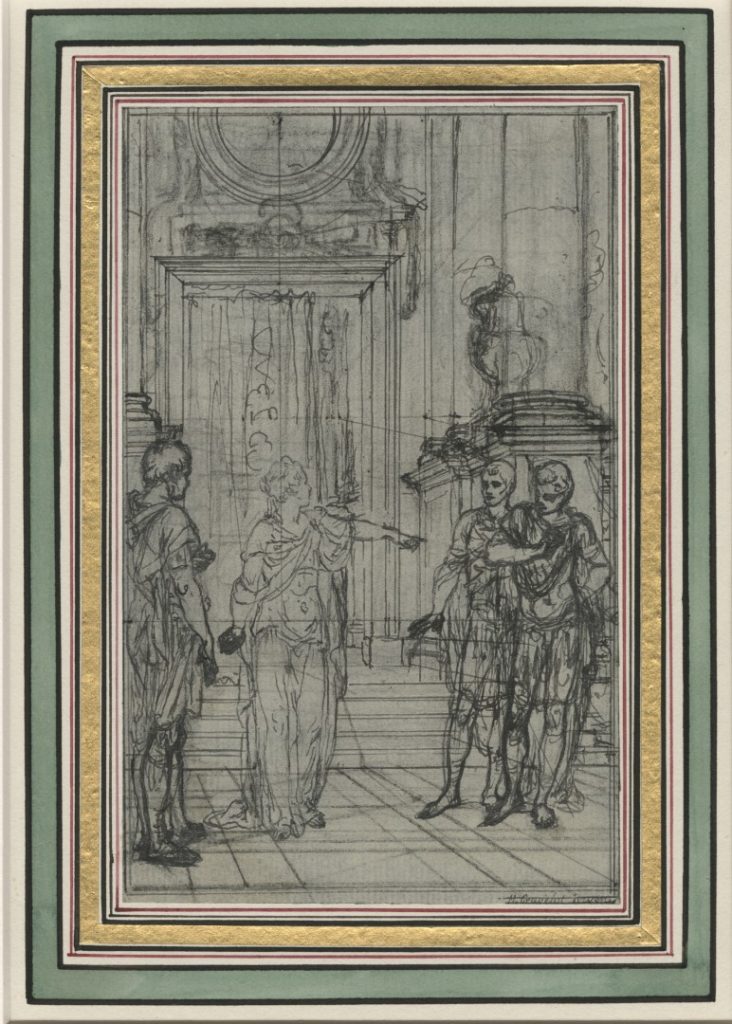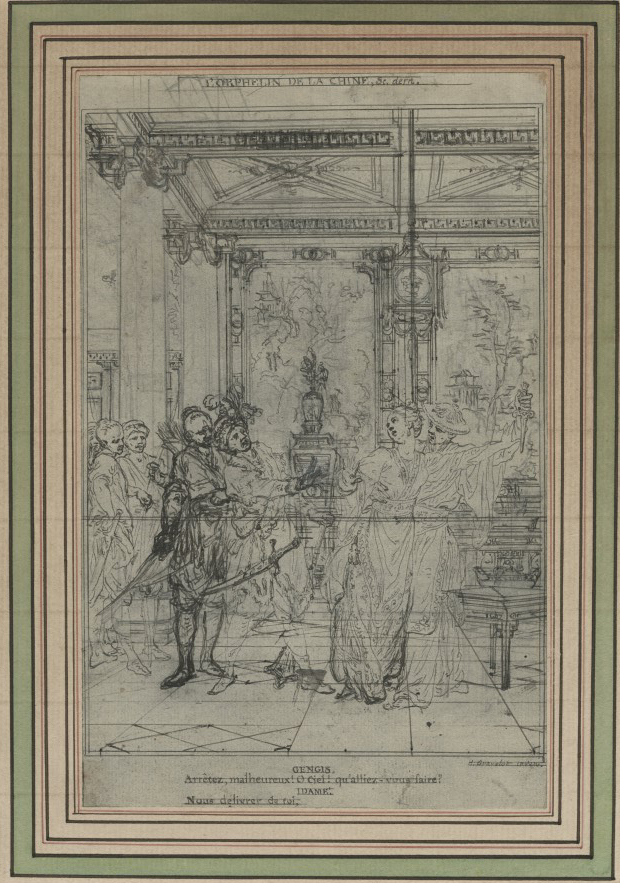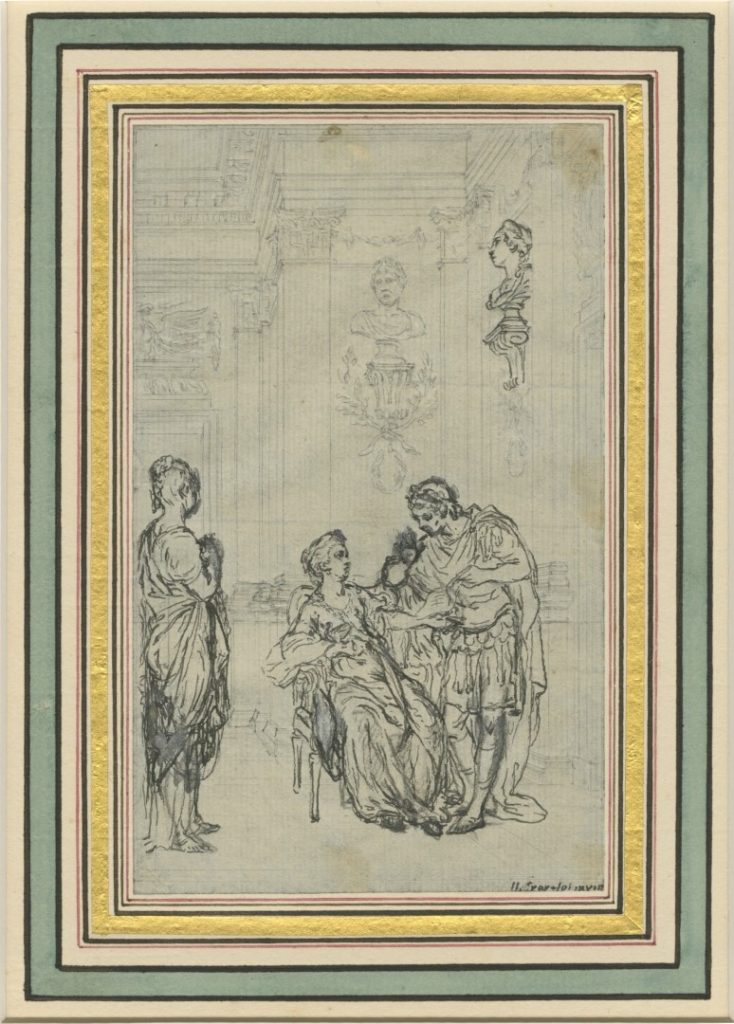This week’s blog post comes to us from collections intern Rebecca Schott.
Hubert Francois Gravelot was a French illustrative artist during the early half of the 1700’s, and is credited with bringing the French Rococo style to English decorative art. Gravelot began his career by studying art in Paris and Rome but eventually settled on making maps. In 1732, he was invited to travel to England to help engrave an edition of Religious Ceremonies by Picart. He continued to live in England where he made a fortune designing engravings that would decorate English classics, political satires, fashion plates, and gold and silver ornaments.

This is interesting because Rococo began as decoration forthe private rooms of the French king, Louis XIV, and later moved on to otherforms of art like painting, sculpture, and fashion. Rococo interior design is characterized bydelicate features composed of small curves that would be made of wood or
stucco. These features would be placed on interior walls in intricate, floating designs.

The intricate forms of Rococo rooms translated well to furniture and decorative arts where tables, chairs, and mirrors would be graced with delicate designs. Instead of placing furniture against a wall, they would be freestanding to accentuate a lightness and versatility. It was important that furniture could be rearranged in order to accommodate different social gatherings.
Gravelot includes Rococo designs in his carefully constructed drawings of interior spaces. For example, in his drawing for the play L’Orphelin de la Chine elegant,looping designs decorate the walls. The Rococo elements are toned down for his drawing of the play Berenice by Jean Racine, but it is still easy to notice the small details that adorn his spaces.Even his decorative works bring to mind fancy Rococo features.

